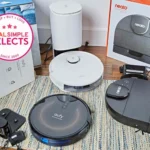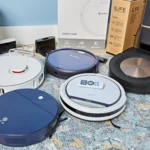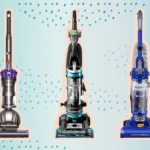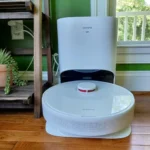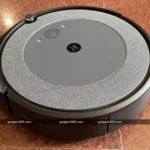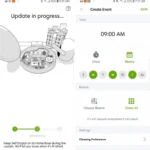When it comes to choosing the right filter for your smart vacuum cleaner, it can be a perplexing task. With so many options available, it can be challenging to determine which one is the most suitable for your needs. However, settling for just any filter is not an option if you want to maintain clean air in your home. Different types of filters have unique benefits and features, and choosing the right one can make a significant difference in the quality of air in your home. In this guide, we will explore the various types of vacuum cleaner filters available, and how to choose the right one for your needs. So, let’s dive in and learn about these essential components of your vacuum cleaner!
Types of Filters
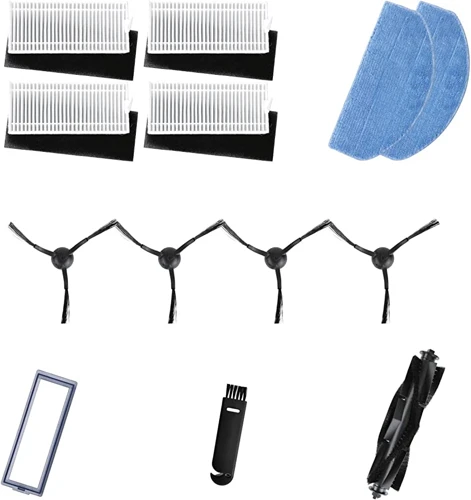
When it comes to smart vacuums, filters are an essential component that helps to capture dirt, dust, and allergens. Choosing the right type of filter helps to ensure that your smart vacuum performs optimally, keeping your home clean and healthy. There are several different types of filters available for smart vacuums, such as HEPA filters, Activated Carbon Filters, Pre-Motor Filters, and Post-Motor Filters. Understanding the differences between them can be confusing, but it’s important to choose the right one for your needs. In the following sections, we will go into detail about each type of filter and what they are used for. For more information on replacing smart vacuum filters, see our guide.
HEPA Filters
HEPA filters are highly efficient filters designed to trap even the smallest airborne particles, such as dust, pollen, pet dander, and even some viruses. They are widely used in high-end air purifiers and smart vacuum cleaners to improve indoor air quality. HEPA filters are made of interlaced glass fibers that create a dense and effective filtering medium. Some vacuum cleaners feature an integrated HEPA filter, while others offer the option to buy and replace a HEPA filter.
There are different types of HEPA filters based on their efficiency and size. Here are the main types of HEPA filters available for smart vacuum cleaners:
- True HEPA filters are the most efficient type of HEPA filters, capturing up to 99.97% of airborne particles that pass through the filter. They are typically used in medical and industrial settings, but also in high-end residential air purifiers and smart vacuums.
- HEPA-like filters are less efficient than true HEPA filters, but still better than standard filters. They capture up to 95% of particles that pass through the filter, including some allergens and dust. They are cheaper than true HEPA filters and more widely available, but may not be as effective for people with severe allergies or respiratory issues.
- Washable HEPA filters are designed to be washed and reused several times, reducing the need for frequent replacements. They are a cost-effective and eco-friendly option, but may lose efficiency over time and require careful cleaning to avoid damage.
Choosing the right HEPA filter will depend on your specific needs and preferences. Here are some factors to consider:
- Filter efficiency: If you or someone in your household has severe allergies or respiratory issues, a true HEPA filter is the best option. Otherwise, a HEPA-like filter or a washable HEPA filter may be sufficient.
- Filter replacement frequency: Depending on how frequently you use your smart vacuum cleaner, you may need to replace the HEPA filter every few months. Consider the cost and availability of replacement filters when choosing a HEPA filter type.
- Vacuum cleaner compatibility: Make sure the HEPA filter you choose is compatible with your smart vacuum cleaner model and brand. Consult the user manual or manufacturer’s website for specific recommendations.
Internal link: Smart Vacuum Filter Replacement Guide provides detailed instructions on how to replace the filter in your smart vacuum cleaner, including HEPA filters.
Activated Carbon Filters
Activated carbon filters are another type of filter that is commonly used in smart vacuum cleaners. These filters are designed to absorb and trap odors and other impurities, leaving the air in your home smelling fresh and clean.
Advantages:
- Activated carbon filters are highly effective at removing odors and other impurities from the air, making them a great choice for pet owners or anyone with allergies or other respiratory issues.
- These filters are also long-lasting, meaning that they don’t need to be replaced as often as other types of filters
Disadvantages:
- Activated carbon filters are not as effective at removing fine particles like dust and pollen as HEPA filters, so they may not be the best choice for people with severe allergies or respiratory issues
- Since activated carbon filters are designed to absorb impurities, they can become saturated over time and will need to be replaced eventually
When considering whether an activated carbon filter is right for your smart vacuum cleaner, it’s important to think about your specific needs and preferences. If you have pets or suffer from allergies, an activated carbon filter could be a great option for reducing odors and improving air quality in your home. However, if you are looking for a filter that will remove fine particles like dust and pollen, a HEPA filter may be a better choice.
To learn more about how to clean and maintain your smart vacuum cleaner filters, check out our article “How to Clean and Maintain Your Smart Vacuum Cleaner Filters”. And if you’re not sure how often to replace your filters, read our guide to “Smart Vacuum Filter Replacement Frequency”.
Pre-Motor Filters
Pre-motor filters, as the name suggests, are filters that are located before the motor of the smart vacuum cleaner. These filters ensure that the motor is protected from dirt, debris, and dust particles. Without these filters, these particles could enter the motor and cause damage. Pre-motor filters usually come in the form of foam or felt pads or a combination of both.
The effectiveness of these filters is dependent on the material used and the surface area of the filter. A larger surface area of the filter increases the filtering capability. It is essential to consider the quality of material as well because certain materials may not capture all the microscopic particles. Pre-motor filters are often washable and reusable. Depending on the model, they can last for up to 3 to 6 months and may need changing sooner if they become too clogged.
One common error people make when dealing with pre-motor filters is leaving them until they become super clogged before cleaning or changing them. It is important to add checking your filters to your routine cleaning schedule. Some smart vacuums have a sensor that alerts you when the filter needs to be cleaned or replaced.
It is essential to follow the manufacturer’s instructions on how to clean or replace the pre-motor filter. Using water on filters that are designed to be disposable can result in damage or ineffective filtering. Before purchasing a smart vacuum cleaner, it’s good to research and understand the difference between washable and disposable pre-motor filters. We have written another article on this topic – “Understanding Washable Vs Disposable Filters on Smart Vacuums”.
Upgrade options for pre-motor filters are generally limited. The factory filter is more efficient and will fit perfectly into the vacuum. Some companies make a HEPA pre-motor filter that is an upgrade in terms of efficiency. If upgrading your pre-motor filter, ensure you note the type of filter required by your specific vacuum – this information is usually available in your user manual.
Pre-motor filters are an essential component of your smart vacuum. Protecting your motor is critical to the longevity of your smart vacuum. Ensure the correct filter is used for the model of the vacuum, check and clean or replace it regularly, and always consult the manufacturer’s instructions before cleaning or replacing it. For more tips on filters, please see our article titled “Five Tips for Maintaining Your Smart Vacuum Filter.”
Post-Motor Filters
When it comes to smart vacuum cleaner filters, post-motor filters play an important role in keeping the air clean and free from allergens. These filters are placed after the motor and help to capture the fine dust particles that could otherwise escape through the exhaust.
There are typically two types of post-motor filters: foam filters and pleated filters. Foam filters are washable and can be reused for a longer duration, while pleated filters need to be replaced more frequently.
Here’s a table outlining the differences between foam and pleated post-motor filters:
| Foam Filters | Pleated Filters | |
|---|---|---|
| Filter Material | Synthetic foam | Paper or synthetic fiber |
| Longevity | Long-lasting, washable and reusable | Need to be replaced more frequently (around once every six months) |
| Filter Efficiency | Less efficient than pleated filters; captures larger particles but may not be effective on smaller ones | Highly efficient in capturing fine dust and allergens down to 0.3 microns |
| Care & Maintenance | Can be washed and reused multiple times | Need to be replaced every six months to maintain filter efficiency |
| Cost | More cost-effective in the long run due to reusable nature | May be more expensive due to need for frequent replacement |
When choosing a post-motor filter for your smart vacuum cleaner, it’s important to consider your individual needs and the environment you’ll be vacuuming in. It’s also crucial to keep in mind the efficiency and longevity of the specific filter to ensure it meets your requirements.
If you’re unsure about which post-motor filter to choose and how to properly maintain it, you can find valuable information in our article about common mistakes when replacing filters in smart vacuums. Additionally, if you’d like to upgrade to a higher quality post-motor filter, you can also visit our article on smart vacuum filter upgrades for some great options.
Considerations for Choosing the Right Filter
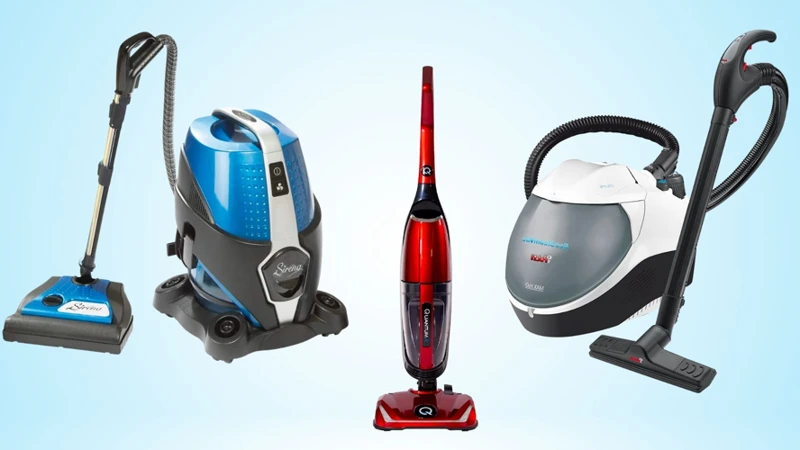
When it comes to choosing the right filter for your smart vacuum cleaner, there are a number of factors to consider. It can be quite perplexing to figure out which one is the best fit for your needs, but taking the time to evaluate the options available can result in a cleaner home and more efficient use of your vacuum. In this section, we will explore some key considerations to keep in mind as you navigate the world of vacuum cleaner filters. From filter efficiency to vacuum cleaner type, we’ll cover everything you need to know to choose the right filter for your home.
Filter Efficiency
When selecting a filter for your smart vacuum cleaner, one of the most important considerations is its efficiency. A filter’s effectiveness in capturing dust, dirt, and other particles directly affects how clean your home will be.
To help you understand the differences in filter efficiency, we’ve created the following table:
| Filter Type | Efficiency Rating | Particle Size Captured |
|---|---|---|
| HEPA Filters | Up to 99.97% | 0.3 microns or larger |
| Activated Carbon Filters | Varies | Large particles and odors |
| Pre-Motor Filters | Varies | Large particles and debris |
| Post-Motor Filters | Varies | Large particles and debris |
As you can see, HEPA filters are the most efficient option, capturing up to 99.97% of particles as small as 0.3 microns. Activated carbon filters, on the other hand, are more focused on capturing larger particles and odors, making them less efficient at capturing small particles.
The efficiency rating of pre-motor and post-motor filters can vary depending on the material used and the quality of the filter. It’s important to research and compare different brands and models to ensure you are getting a filter that meets your needs.
When choosing a filter for your smart vacuum cleaner, it’s important to consider the size of particles you want to capture. If you have allergies or asthma, a HEPA filter is the best option to capture small particles like dust mites and pet dander. However, if you are simply looking to reduce odors or capture larger debris, an activated carbon, pre-motor, or post-motor filter may suffice.
Remember, the efficiency of a filter directly affects the cleanliness of your home, so it’s important to choose wisely.
Filter Replacement
Filter replacement is a crucial aspect to consider when choosing the right filter for your smart vacuum cleaner. It is essential to replace the filter regularly to ensure it works effectively and keeps your indoor air quality at its best. The frequency of filter replacement will depend on the usage and the type of filter you are using.
Here’s a table to give you an idea of how often you should replace each type of filter:
| Filter Type | Frequency of Replacement |
|---|---|
| HEPA Filters | Every 6 months to a year or when the filter gets clogged |
| Activated Carbon Filters | Every 2 to 3 months or when the filter starts to emit a bad odor |
| Pre-Motor Filters | Every 3 to 6 months or when the filter is dirty and clogged |
| Post-Motor Filters | Every 6 to 12 months or when the filter appears dirty |
It’s important to note that dirty filters do not only affect the vacuum cleaner’s suction power but can also reduce its lifespan. When the filter becomes clogged with dirt and debris, it makes your vacuum cleaner work harder to clean, putting a strain on its motor and shortening its lifespan. That’s why filter replacement is something you should not take lightly.
When purchasing filters for your smart vacuum cleaner, it’s always a good idea to check if replacement filters are available and at what cost. Some filters can be expensive, and you don’t want to be caught off guard when it’s time to replace them. Proper maintenance of the filters will ensure that your vacuum cleaner works effectively and prolong its lifespan.
Vacuum Cleaner Type
When choosing a filter for your smart vacuum cleaner, it is important to consider the type of vacuum cleaner you have. Not all filters are compatible with every vacuum cleaner, so taking this into account can help make your decision easier. Here are some considerations based on the type of vacuum cleaner you own:
- Upright Vacuum Cleaners: Upright vacuum cleaners are the most common type of vacuum cleaner and are usually equipped with a bagged or bagless system. If you have an upright vacuum cleaner, you can use most types of filters, including HEPA filters and pre-motor filters.
- Canister Vacuum Cleaners: Canister vacuum cleaners are lightweight and easy to maneuver, making them ideal for cleaning tight spaces. If you own a canister vacuum cleaner, look for filters that are designed specifically for your make and model.
- Stick Vacuum Cleaners: Stick vacuum cleaners are lightweight and cordless, making them convenient for quick clean-ups. Most stick vacuum cleaners are equipped with a washable filter that can be reused multiple times before needing to be replaced.
- Robotic Vacuum Cleaners: Robotic vacuum cleaners are becoming increasingly popular for their convenience and efficiency. When choosing a filter for your robotic vacuum cleaner, make sure to choose one that is compatible with the specific make and model of your vacuum.
- Handheld Vacuum Cleaners: Handheld vacuum cleaners are ideal for cleaning hard-to-reach areas, such as upholstery and cars. Look for filters that are washable and easy to clean for added convenience.
By taking into account the type of vacuum cleaner you have, you can ensure that you choose a filter that works best for your specific needs. Remember to always refer to your vacuum cleaner’s manufacturer instructions when selecting a filter to ensure compatibility and proper use.
How to Clean and Maintain Your Vacuum Cleaner Filter
Cleaning and maintaining your vacuum cleaner filter is an essential part of ensuring that your smart vacuum cleaner is working efficiently. When your vacuum cleaner filter is clogged with dust, dirt, and debris, it can decrease the suction power of the machine and make it harder for it to pick up dirt and dust from your floors. Here are some steps to follow for cleaning and maintaining your vacuum cleaner filter.
Step 1: First, make sure to turn off your smart vacuum cleaner and unplug it from the power source. This will prevent any accidents from occurring.
Step 2: Next, locate the filter on the vacuum cleaner. Depending on the model and brand of your vacuum cleaner, the filter may be located near the dustbin or inside the machine. Refer to the user manual for directions if you are unsure.
Step 3: Carefully remove the filter from the vacuum cleaner. Check the filter for any tears, holes or damage. If there is any damage, the filter must be replaced.
Step 4: If the filter is washable, rinse it gently with water. Mild soap can be used if necessary. Make sure to thoroughly rinse all soap residue from the filter. Do not use hot water, as this can cause damage to the filter.
Step 5: Allow the filter to dry completely before putting it back into the vacuum cleaner. This may take several hours, depending on the size and thickness of the filter.
Step 6: If the filter cannot be washed, gently tap it against a hard surface to remove any loose dirt and debris. Do not use any sharp objects or brushes to clean the filter, as it can damage it.
Step 7: Once the filter is completely dry or cleaned, place it back into the vacuum cleaner. Make sure it is securely in place before turning on the vacuum cleaner.
Step 8: Depending on the frequency of use, vacuum cleaner filters should be cleaned or replaced every three to six months. Refer to the user manual for specific instructions.
By following these steps to clean and maintain your vacuum cleaner filter, you can ensure that your smart vacuum cleaner is working efficiently and effectively. Remember to keep the user manual handy for specific instructions and guidelines on cleaning and replacing the filter.
Conclusion
After exploring the different types of filters available for smart vacuum cleaners and the considerations to keep in mind when choosing the right one, it is evident that selecting the appropriate filter is crucial for ensuring your smart vacuum cleaner functions effectively and efficiently.
HEPA filters are ideal for households with pets, allergies, or breathing problems, as they have a high level of filtration efficiency and capture even the tiniest particles, such as pet dander and dust mites.
Activated Carbon Filters are excellent for eliminating unpleasant odors and removing harmful chemicals, making them an ideal choice for households with smokers or in areas with high air pollution levels.
Pre-Motor Filters prevent larger particles from entering the motor, which prolongs the life span of your vacuum cleaner, and are effortless to replace.
Post-Motor Filters capture smaller particles and release clean air back into the environment, providing an extra layer of filtration for homes that require it.
When selecting a filter for your smart vacuum cleaner, be sure to consider its efficiency and replacement requirements based on your specific cleaning needs. Also, be aware of the type of vacuum cleaner you have as some filters may not be compatible with certain models.
Finally, to prolong the life of your vacuum cleaner filter, it is best to clean and maintain it regularly. This will help keep it in optimal condition and avoid damage to the motor or other parts.
In conclusion, choosing the right filter for your smart vacuum cleaner is critical for keeping your home clean and healthy. By understanding the different types of filters and the considerations to keep in mind, you can make an informed choice and enjoy the benefits of clean, fresh air in your home.
Frequently Asked Questions
1. Can I use any filter for my smart vacuum cleaner?
No, you cannot use any filter for your smart vacuum cleaner. Each vacuum cleaner model and brand has its own compatible filter. Make sure to check your vacuum cleaner manual for recommended filter types.
2. What is HEPA filter efficiency?
HEPA filter efficiency is the ability of a filter to remove 99.97% of particles which are 0.3 microns or larger. HEPA filters are commonly used to filter allergens and bacteria from the air.
3. Are activated carbon filters necessary for a vacuum cleaner?
No, activated carbon filters are not necessary for a vacuum cleaner, but they can help to eliminate unpleasant odors in your home while you clean.
4. How often should I replace my vacuum cleaner filter?
This depends on the type of filter and its recommended replacement schedule. Some filters may need to be replaced every three months, while others can last up to a year.
5. Can I wash and reuse my vacuum cleaner filter?
It depends on the filter. Some filters are washable and reusable, while others are disposable. Check the manufacturer’s instructions for proper maintenance and replacement schedules.
6. Should I choose a vacuum cleaner with pre-motor and post-motor filters?
It’s a good idea to choose a vacuum cleaner with both pre-motor and post-motor filters. The pre-motor filter helps to protect the motor from dust and debris, while the post-motor filter ensures that clean air is expelled back into the room.
7. Can I use my smart vacuum cleaner without a filter?
No, you should never use a vacuum cleaner without a filter. This can cause dust and debris to be dispersed back into the air, which can be harmful to your health.
8. What type of filter is best for pet hair?
HEPA filters are the best for pet hair as they can capture dander and fine hair particles. You may also want to consider a vacuum cleaner with a specialized pet hair filter.
9. How do I know when it’s time to replace my vacuum cleaner filter?
You will likely notice a decrease in suction power or an increase in dust and debris being released into the air when it’s time to replace your filter. Check the manufacturer’s instructions for recommended replacement schedules.
10. Can I use an off-brand filter for my vacuum cleaner?
We recommend using only the recommended filter for your vacuum cleaner, which is usually provided by the manufacturer. Off-brand filters may not fit properly or provide the same level of filtration as the recommended filter.

